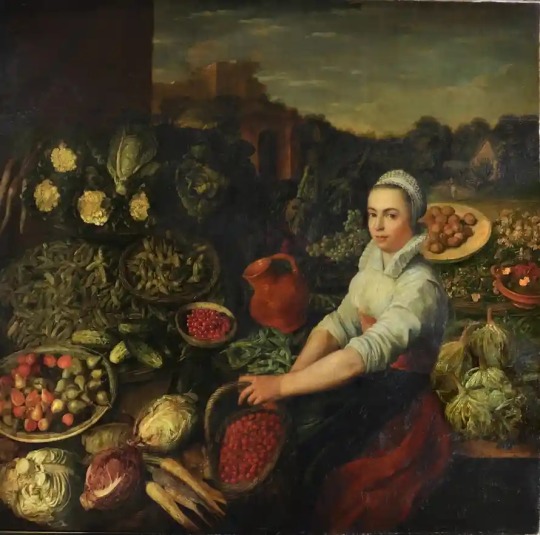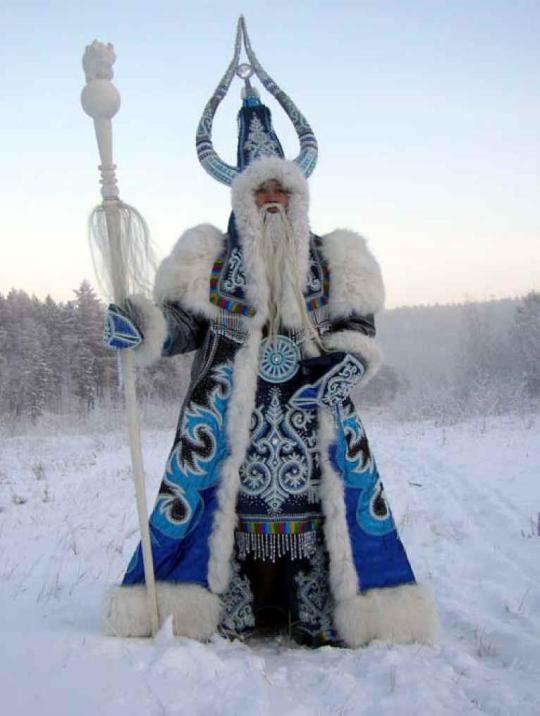Text
Yep. It is. Definitely puffier shirt before restoration. She looks like she was painted in 19 century, not hundreds years earlier.




The art history version of “you’d look prettier if you smiled more”
181K notes
·
View notes
Text
youtube
OMG... I just can't... it's soooo beautiful!!!
6 notes
·
View notes
Photo
As a russian I should add. Snegurochka is a granddaughter of Ded Moroz and not his daughter.

The Russian Santa Claus in Siberia (The eastern part of Russia situated in Asia). He’s known as Ded Moroz. -Merry Xmas from Universal Beauty
174K notes
·
View notes
Photo
They cool af





6K notes
·
View notes
Photo
I just love them both.










“ Autumn’s flourish fruit That falls for you Apples sweet as death All that falls has lived And died for you Gently come to rest ”
Bonus:

#emma#emma 2020#jane austen#emma woodhouse#george knightley#anya taylor joy#johnny flynn#autumn de wilde
143 notes
·
View notes
Photo
SO beautiful...


Witch by Eunice Ye
1K notes
·
View notes
Photo

OLEG THE PROPHET
This is an excerpt from my post: KIEVAN RUS: PART 1 – NORTHERN ENIGMA OF THE MIDDLE AGES.
According to the ‘Russian Primary Chronicle’, parts of medieval Russia were beginning to be colonized, inhabited and sometimes ruled by foreign Norse mercenaries known as the Rus. One such ruler was a man named Oleg the Seer or Oleg the Prophet. After the previous ruler’s death Oleg became regent of Novgorod until the true prince grew up.
“On [Rurik’s] deathbed, Rurik bequeathed his realm to Oleg, who belonged to his kin, and entrusted to Oleg’s hands his son Igor’, for he was very young.” –Russian Primary Chronicle.

^ Early Rus.
Oleg’s Rus–Byzantine War (907 CE)
After deposing two Norsemen who set themselves up as rulers of the city of Kiev without Novgorod’s consent, Oleg established it as the new capital of ‘Kievan Rus’. Oleg then sailed his force of Varangians, Slavs and Finns against the rich empire across the Black Sea, the Byzantine Empire. The Byzantines closed up the Bosphorus strait so his naval forces had to disembark and march on the heavily fortified city of Tsargrad (Constantinople). The Rus fought along the outskirts where they destroyed churches, palaces and killed many:
“Of the prisoners they captured, some they beheaded, some they tortured, some they shot, and still others they cast into the sea.” – Russian Primary Chronicle.
Oleg had his men collect or make wheels and attach them to his ships as to allow them, by the wind-blown sails, to advance towards the city on land. The Greeks then sent out wine and food laced with poison to Oleg the Seer’s forces as a gift but as his name implied, he foresaw their treachery and avoided being poisoned. The Greeks then, in fear of losing the whole of Greece over something that could be easily avoided, agreed to Oleg’s terms.

The Greeks would pay his forces and also pay tribute to the cities of Kievan Rus. The Greeks were to support Oleg’s emissaries or merchants for six months with food (grain, fish, and fruit), wine and bath, letting them trade tax-free and reside in the St. Mamas quarter of the city. Upon their voyage back home the Rus would be given “food, anchors, cordage and sails”. The Rus must only come over if they intend on trading, “shall commit no violent acts in the towns or upon our territory” and must enter unarmed no more than fifty at a time and escorted by the emperor’s men. Either to mark their victory over Tsargrad (Constantinople) or to seal the peace agreement, the Rus hung their shields on the gates of Tsargrad; a common Norse custom.

^ ‘Oleg Has His Shield Fixed to the Gates of Constantinople’ by Fyodor Bruni.
“Thus the Emperors Leo and Alexander made peace with Oleg, and after agreeing upon the tribute and mutually binding themselves by oath, they kissed the cross, and invited Oleg and his men to swear an oath likewise. According to the religion of the Russes, the latter swore by their weapons and by their god Perun (god of thunder and lightning), as well as by Volos, the god of cattle, and thus confirmed the treaty.” – Russian Primary Chronicle.
According to the Russian Primary Chronicle Oleg asked sorcerers [volkhi] and fortune-tellers how would he die and the prophecy was that his horse would be the death of him so he had his horse removed from sight and ordered that the horse was to be kept alive and well fed. After the Rus–Byzantine Treaty (907) Oleg asked about the horse and discovered that it had died, he chuckled at the fact that the prophecy had proven false. Insulting the soothsayers and seers, he went to see the corpse of the horse. Upon seeing it he laughed, saying, “Was it this skull that was supposed to cause my death?”; placing a leg on the horse’s skull a serpent suddenly slithered out of the skull and bit his leg, killing him.
If there are any errors please privately inbox me so I can update it. As always, if you’d like to read or learn about any specific historical subjects just let me know what they are and I will take note of them.
See Also:
KIEVAN RUS: PART 1 – NORTHERN ENIGMA OF THE MIDDLE AGES: In this post I will be covering the early portion of the medieval realm known as Kievan Rus (pronounced ‘Roos’); a multiethnic and cultural realm incorporating the Norse, Slavs, Turks, Balts and Finno-Ugrians. A realm centered around the many rivers that were riddled throughout its domains and led them to the riches of the Byzantine Empire, Silverland (Islamic Middle East) and the Baltic Sea. The culture, battle tactics and armaments of the ancient Slavs are addressed as well as the Druzhina (personal bodyguards and standing army). Also mentioned are some of the conflicts the Rus had with one another, the Greeks (Byzantine Empire), Bulgarians and Turkish steppe nomads.
KIEVAN RUS: PART 2 – DYING LIGHT IN A DARK AGE: In this post I will cover some of the civil wars, wars of succession and familicide that plagued Kievan Rus; their peak under leaders like Vladimir the Great (who unified the Rus and made Orthodox Christianity their official religion) and Yaroslav the Wise (while Europe was in a dark age, he made Kievan Rus a beacon of knowledge, literacy, trade and faith); Kievan Rus’ shattering into various feuding states, their clash against the Mongols and their rarely spoken of religion. The Chernye Klobuki (Turkish mercenaries) and the Varangian Guard (Norse, Slavic, Germanic, etc.) are also noted; the latter were warriors employed by the Byzantine Empire to act as the Emperor’s trusted personal guard and on occasion they acted as pirate hunters, policemen, jailers, prison guards, torturers and interrogators.
270 notes
·
View notes
Photo
When I was a little girl, the appearance of this figure seemed to me REALLY scary, and she was brilliantly portrayed by George Millyar in Soviet cinema.

In Russian folklore and fairytales Baba Yaga is a supernatural being, sometimes referred to as witch or demon, of ambiguous nature. She flies around in a mortar, wields a pestle, sweeping away her tracks or traces with a broom. She dwells deep in the forest in a hut usually described as standing on chicken legs, the fence around the hut is built out of human bones and is topped with human skulls. Visitors to her hut has to say a special phrase to make the hut turn around and let them enter in: “Hut, hut! Stand with your front facing me, and your back to the forest!“ Baba Yaga frequently bears the epithet “bony leg”, which reflects Baba Yaga’s role as gatekeeper between world of the living and world of the dead.
Baba Yaga is both enigmatic and dualistic as she may help or hinder those that encounter or seek her out and may even play a maternal role. In folklore research she is sometimes summarized as “a many-faceted figure, capable of inspiring researchers to see her as a Cloud, Moon, Death, Winter, Snake, Bird, Pelican or Earth Goddess, totemic matriarchal ancestress, female initiator, phallic mother, or archetypal image”.
Source: “Baba Yaga: The Ambiguous Mother and Witch of the Russian Folktale” by Andreas Johns. Image: “Baba Yaga” by IrenHorrors (Ksenia Svincova).
1K notes
·
View notes
Photo
I know it’s kind of late... but real life and job can be so exhausting... anyway... I love show.. it can be weird some time but i still love it

282 notes
·
View notes
Photo
Hell yeah!!!

Yessss!!
123 notes
·
View notes
Photo

Pottermore Sorting Quiz (all possible questions)
My Result: RAVENCLAW!(77%)
Congratulations! You have been sorted into Ravenclaw, the house of intelligence, curiosity, individualism, and wit. You are amongst other Ravenclaws, such as: Cho Chang, and Luna Lovegood.
Additional Results:
RAVENCLAW! (77%)
GRYFFINDOR! (46%)
HUFFLEPUFF! (45%)
SLYTHERIN! (40%)
Visit: Pottermore Sorting Quiz (all possible questions)
2 notes
·
View notes
Text
Reblog if your profile pic is actually YOU .
156K notes
·
View notes


















